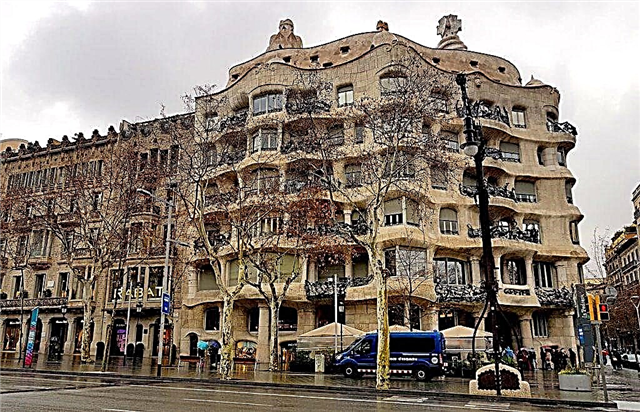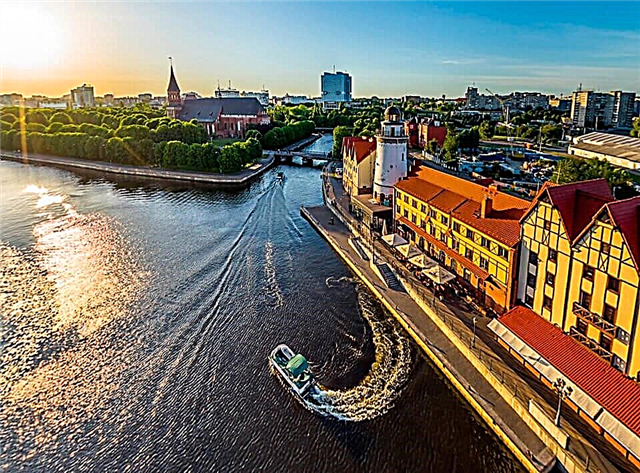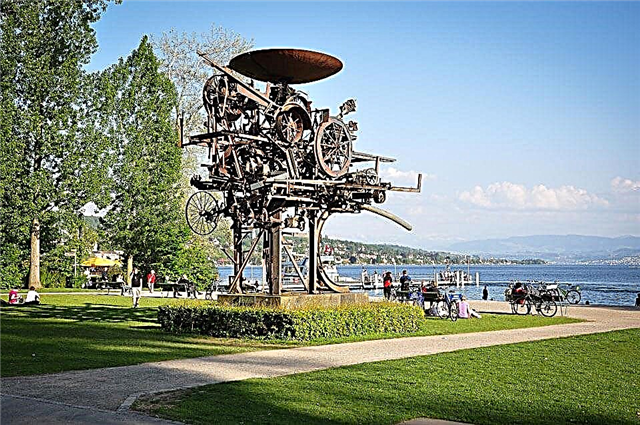In a bay on the southwestern coast of the Crimean Peninsula on the territory of the region of modern Sevastopol, approximately in the middle of the fifth century BC. e. was founded by the ancient Greeks Tauric Chersonesos, which was a huge center of the Northern Black Sea region, where culture, crafts and trade were actively developing.
Historical facts
The history of this city is closely connected with the history of ancient and medieval states. Due to the fact that Chersonesos was located at the intersection of sea routes, and trade was rapidly developing in it, it had enormous wealth, and attracted the attention of many conquerors. In the second half of the IV-III century. BC Chersonesos reaches the maximum flourishing of economy and culture.

General view of the ruins of Tauric Chersonesos
However, the Scythian kings, whose state was located in the center of the peninsula, begin numerous wars, trying to seize the grain trade in the Crimea. Then the Chersonesos conclude an agreement on military assistance with the king of the Pontic state, which arose after the collapse of the empire of Alexander the Great, which subsequently leads to the fact that Chersonesos loses its independence.

Basilica
The king of the Pontic state drives out the Scythians, but, at the same time, almost the entire Crimea loses its independence and begins to pay tribute in the form of bread and silver to Mithridates VI of Pontic.
Mithridates VI of Pontic waged constant wars with Rome, during the reign of his son an enslaving alliance with the Roman Empire was concluded, as a result of which Chersonesus became dependent on the Roman Empire. At the beginning of the new era, Christianity came to Chersonesos and in the IV century it became the official religion. During this period, ancient monuments, temples and a theater were destroyed and Christian churches and chapels were erected in their place. In the 5th century, the city was part of the Byzantine Empire.

Basilica in the Basilica
An important historical event was the wedding in 988 of the Byzantine princess Anna with the Kiev prince Vladimir the Red Sun, who conquered the city after a long siege and was baptized here. It was this historical event that marked the beginning of the Christianization of Kievan Rus, and Prince Vladimir was named Vladimir the Baptist. In honor of him, on the site of a medieval temple in the 19th century, a cathedral was erected - the Cathedral of St. Vladimir.

St. Vladimir's Cathedral
City architecture
Archaeological excavations began in 1827. What is important is the fact that they are being conducted intermittently until now..

City gate
The work of several generations of archaeologists and historians makes it possible to get acquainted with the history and culture of this ancient city, the center of human civilization, which was also called Russian Troy. The city's architecture reflects the influence of different cultures.
Once the city was surrounded by powerful defensive walls with towers 3-5 meters thick. The largest is the round Zeno tower. Its diameter is 23 meters. Tombstones were found inside the tower, and outside there is a slab indicating that the tower was built in 488 in honor of Zeno the Byzantine emperor.

Zeno Tower
An important feature of the city's layout is the rhythmic arrangement of longitudinal and transverse streets. Straight streets divided the city into identical rectangles, small blocks of three or four houses. But the estates of the Chersonesos nobility looked like small fortresses, with high towers, built of large stone blocks, the thickness of the walls of which reaches two meters and the height of 12 meters. The main street of the city starts from the main gate, goes along the ridge of the cape up to the fortress wall.

City walls
In the city of Chersonesos, in the northeastern region, there was also a mint, where, during the excavations, fragments of a smelting forge were found, various wastes from bronze production and blanks for coins. In ancient times, the cult of the Virgin goddess was very widespread in Chersonesos. The priests of the city dedicated altars and statues to the Virgin in her temple, where incubation was also practiced, that is, a kind of sacred dream. Under the influence of the Romans, an aqueduct was built in Chersonesos, which facilitated the construction of large public baths - thermal baths, steam rooms and swimming pools.

Inner gate
The ancient theater dating back to the 3rd century is very well preserved to this day. e, which accommodated about three thousand citizens... Opposite the central aisle of the theater was an altar, and a stone platform towered above, where the actors performed. Above the platform there was a building, a place where the artists changed their clothes, against the background of which the performance was going on. To this day, various performances are held here. Another attraction of the city is its religious center. In this center, the largest three-aisled basilica in Crimea was opened, the length of which is 50 meters, the width is more than twenty meters.

Antique theater
Most of the Chersonesus basilicas were destroyed and in their place were built small churches and chapels, one or two in each quarter. On the seashore there is a large copper bell, which was cast in 1778 in Taganrog. Turkish captured guns served as the material for this. It is decorated with images of the patrons of sailors - St. Nicholas and Phocas. This bell was taken by the French from Sevastopol during the Crimean War, however, 60 years later it was discovered in notre-dame cathedral and then he was returned to Sevastopol. Now the bell is installed on the seashore and warns passing ships in the fog about the proximity of the rocks.

Misty bell
An important part of the reserve is the archaeological museum, located in the buildings of the former monastery of St. Vladimir. Today the museum collection numbers over 200 thousand items. Thus, there are many places of interest in Chersonesos, each of which keeps its history and fascinates with its beauty and primitiveness. Chersonesos is a historical monument reflecting entire eras. A visit to this reserve will amaze anyone, because it is impossible to remain indifferent at the sight of such a majestic beauty of the ancient city.
Attraction rating:











